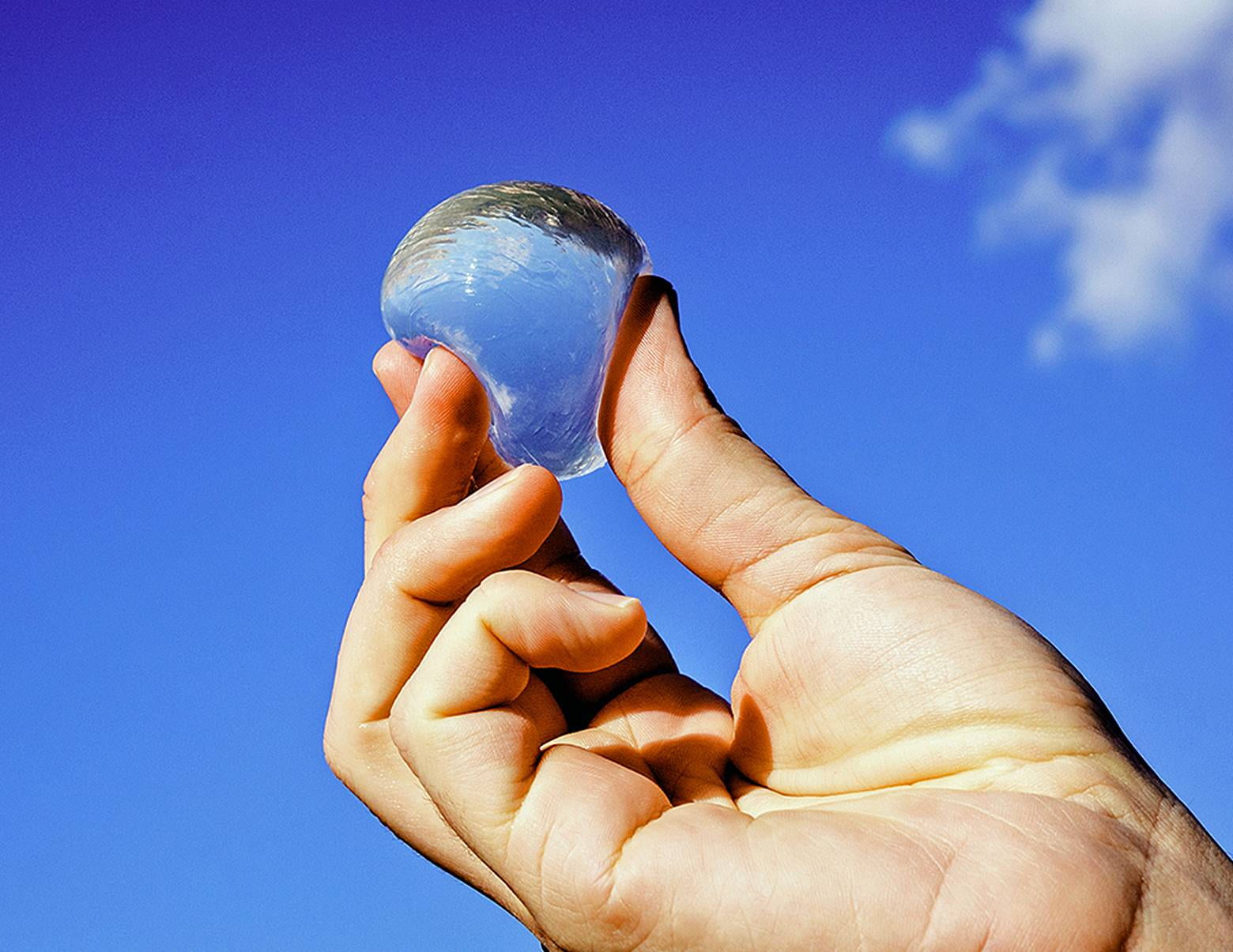A few weeks back, we discussed pollution from food and food packaging, arising from the Super Bowl in the US. Recently, major sporting events such as the 2019 London Marathon experimented with distributing more than 30,000 sports drink-filled sachets (Oohos) to marathoners (Wilson, 2019). Compared to our previous post on the Great Bubble Barrier which does not seem to directly tackle the root problem of consumerism and pollution, these seaweed pods seem to be a great solution to our burgeoning plastic problem.

In the 2018 London Marathon, more than 919,000 plastic bottles were used (Nace, 2019a). Globally, more than one million plastic bottles are bought every minute, and is estimated that the ocean will contain more plastic by weight than fish by 2050 (Nace, 2019b).
Seaweed pods
These intriguing little sachets were developed by the London start-up, Skipping Rocks Lab. Edible and tasteless, they can be filled with a variety of liquids such as condiments, juices, sauces and cocktails (Notpla, n.d.).

The membranes are made from Notpla, a material derived from seaweed and plants (Notpla, n.d.). Compared to the common polyethylene terephthalate (PET) plastic bottle which takes at least 400 years to decompose (Wilson, 2019), these only take 4 to 6 weeks (Notpla, n.d.) to biodegrade if not consumed.
Weeding out carbon
Directly replacing plastic with seaweed potentially reduces our carbon footprint. Duarte et al.’s (2017) paper analyses the role of seaweed cultivation in climate change adaptation and mitigation. Seaweed is an important remover of atmospheric CO2 and carbon sink as they are highly autotrophic. They produce much more organic matter during photosynthesis than taken in during respiration, capturing great amounts of CO2 in marine vegetated ecosystems. By supplying oxygen and increasing pH levels, seaweed can aid in ocean de-acidification. Seaweed aquaculture also helps protect shorelines as they reduce the effects of coastal erosion by weakening wave energy. Furthermore, as one of the most renewable resources, brown seaweed grows up to 1m a day (Euro News, 2019) and does not compete with food crops for space (Notpla, n.d.). They also do not require fresh water or fertiliser during cultivation (Nace, 2019a), reducing the risk of soil pollution and its effects.
My thoughts:
Personally, I think that seaweed pods are a great initiative with great potential if prices are competitive enough. If they become more widely adopted, I could see new markets being created for seaweed aquaculture, reaping the double benefits of climate change adaptation and reduction in plastic use. There are other points of concern too:
- Production chain and distribution process – it seems that plastic “gloves” are used to distribute the pods to marathoners in the first picture. How dirty is the production process? Are sustainable forms of energy used during production?
- Degree of public acceptance – it might be difficult for many to adjust to “eating” water than drinking it (a weird sensation in the mouth?)
- Issue of hygiene – gloves are used during distribution, but what about those receiving it from them? (a “yuck” factor like NEWater in its early days?)
- People with disabilities – it would be difficult for the paralyzed to pop in a whole seaweed pod to drink as they cannot control their mouth and hands (thus perpetuate the disabled and able-bodied binary and its inequalities?)
Nevertheless, seaweed pods seem promising and I would love to try them out one day! \ (•◡•) /
References:
Campbell, M. (2019). London Marathon champions use of seaweed water pouches. Euro News. Available from: https://www.euronews.com/living/2019/04/29/london-marathon-seaweed-water-pouches [Accessed 20 October 2020].
Frearson, A. (2019). London Marathon offers edible seaweed drinks capsules as alternative to plastic bottles. Dezeen. Available from: https://www.dezeen.com/2019/04/29/london-marathon-ooho-edible-drinks-capsules-seaweed/ [Accessed 20 October 2020].
Lewis, S. (2019). Thousands of seaweed pods will replace single-use plastics at the London Marathon. CBS News. Available from: https://www.cbsnews.com/news/london-marathon-thousands-of-seaweed-pods-will-replace-single-use-plastics/ [Accessed 20 October 2020].
Nace, T. (2019). London Marathon runners were handed seaweed pouches instead of plastic bottles. Forbes. Available from: https://www.forbes.com/sites/trevornace/2019/04/29/london-marathon-runners-were-handed-seaweed-pouches-instead-of-plastic-bottles/#63fa8b6c2ba2 [Accessed 20 October 2020].
Nace, T. (2019). We’re now at a million plastic bottles per minute – 91% of which are not recycled. Forbes. Available from: https://www.forbes.com/sites/trevornace/2017/07/26/million-plastic-bottles-minute-91-not-recycled/#4c8123eb292c [Accessed 20 October 2020].
Notpla (n.d.). Notpla. Available from: https://www.notpla.com/ [Accessed 20 October 2020].
Wilson, J. (2019). “Edible water bottles” developed by Imperial start-up to be trialled at marathon. Imperial College London. Available from: https://www.imperial.ac.uk/news/190938/edible-water-bottles-developed-imperial-start-up/ [Accessed 20 October 2020].
